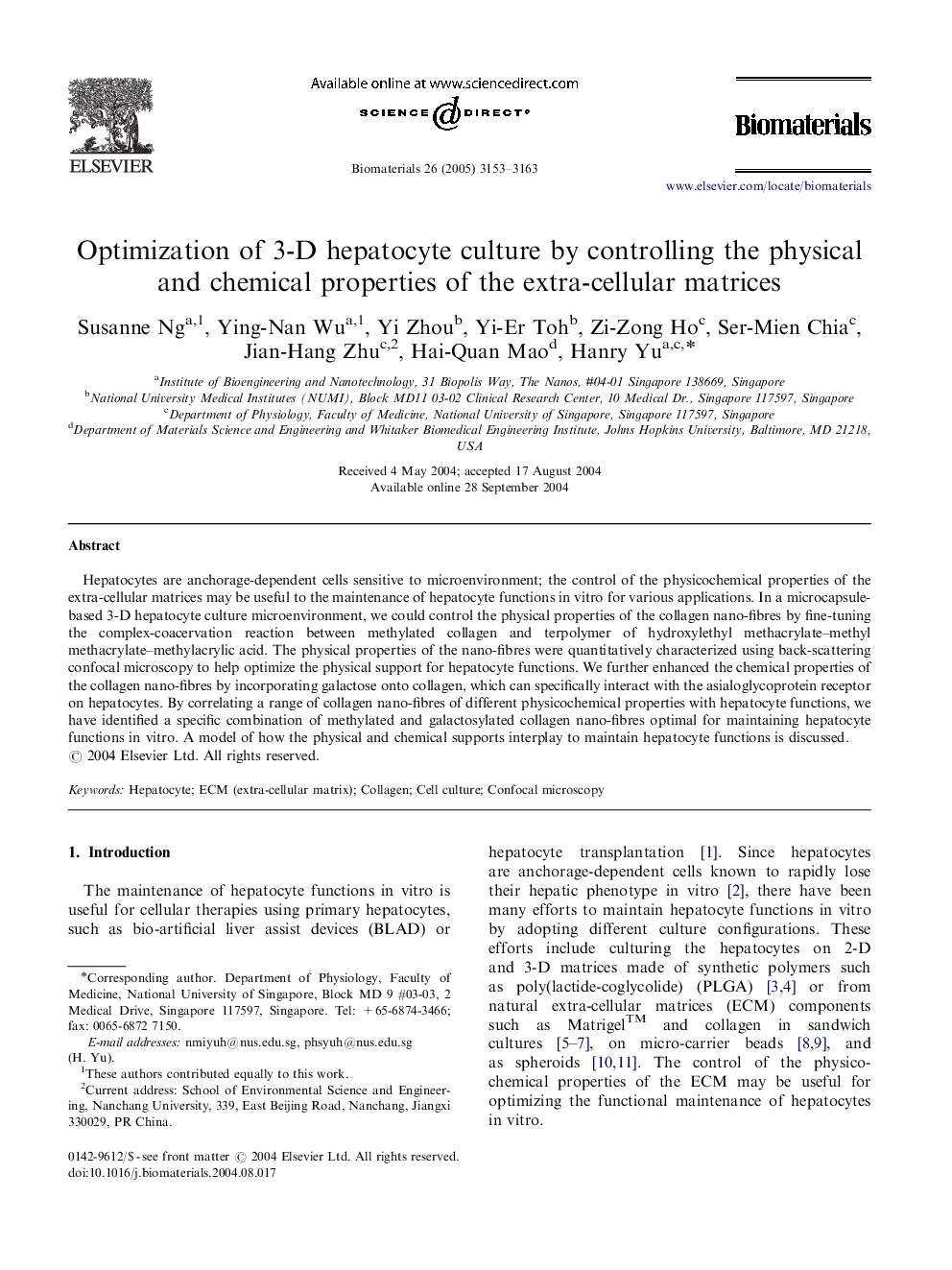| Article ID | Journal | Published Year | Pages | File Type |
|---|---|---|---|---|
| 12264 | Biomaterials | 2005 | 11 Pages |
Hepatocytes are anchorage-dependent cells sensitive to microenvironment; the control of the physicochemical properties of the extra-cellular matrices may be useful to the maintenance of hepatocyte functions in vitro for various applications. In a microcapsule-based 3-D hepatocyte culture microenvironment, we could control the physical properties of the collagen nano-fibres by fine-tuning the complex-coacervation reaction between methylated collagen and terpolymer of hydroxylethyl methacrylate–methyl methacrylate–methylacrylic acid. The physical properties of the nano-fibres were quantitatively characterized using back-scattering confocal microscopy to help optimize the physical support for hepatocyte functions. We further enhanced the chemical properties of the collagen nano-fibres by incorporating galactose onto collagen, which can specifically interact with the asialoglycoprotein receptor on hepatocytes. By correlating a range of collagen nano-fibres of different physicochemical properties with hepatocyte functions, we have identified a specific combination of methylated and galactosylated collagen nano-fibres optimal for maintaining hepatocyte functions in vitro. A model of how the physical and chemical supports interplay to maintain hepatocyte functions is discussed.
